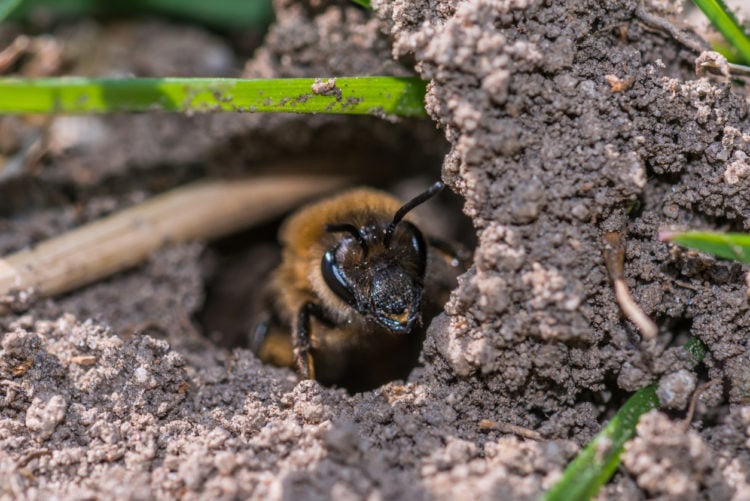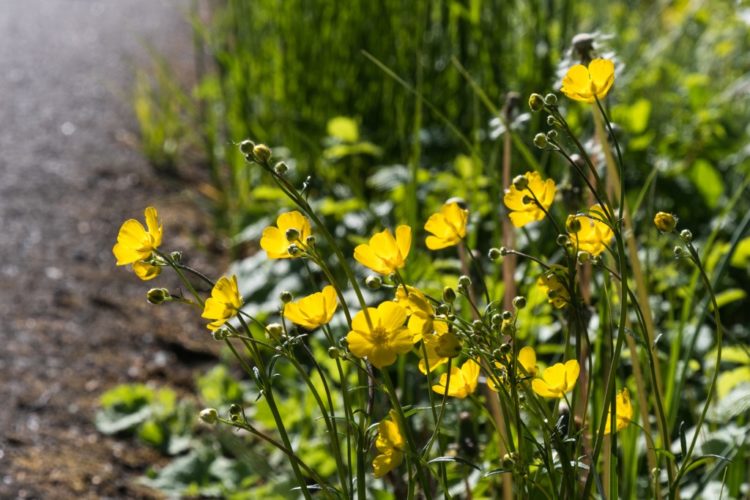Sweden has around 3 000 pollinating insect species. Among wild bees, which are the most important group of pollinators, a third of the species are at risk of extinction. Metria has been commissioned by the Swedish Environmental Protection Agency to produce a geographical database that clearly illustrates where wild bees may have their nesting and foraging sites and how they can move in the landscape, but also where they are prevented from moving.
It will be used as an important planning tool at municipal, county and national level. It provides the opportunity to locate likely problem areas, links that are worth protecting and where to create new links that, for example, allow access to larger areas of foraging habitat.
Large amounts of data are being analyzed to identify potential nesting sites
Most wild bees in Sweden are solitary, meaning that each female builds her own nest in the ground and raises her larvae on pollen.
To identify potential nest sites, large amounts of data from several sources are analyzed, such as national sandy soil layer, moisture index, land use and NDVI index.

AI and satellite data are used to find flowering species
Bees also need enough flowering pollen plants within flying distance of the nest for the female to feed her offspring. Flowering trees and shrubs can be found in a variety of community settings, such as gardens, orchards, roadsides, power lines, parks and even woodlands.
Identifying these environments in spatial data is not straightforward, as it is not only a matter of identifying where trees and shrubs are present, but also identifying whether they are flowering species. That is why Metria has conducted a pilot project this summer to see if it is possible to use AI to identify flowering species. The AI model has been trained on field data from a regional environmental monitoring program (Remiil) from the Swedish University of Agricultural Sciences (SLU) and satellite images from Sentinell-2.
Flowering herb and grasslands such as meadows, gardens and parks are also important places for bees to forage. To identify these, a variety of existing geodata that can indicate flower-rich environments need to be processed and analyzed. Information such as the Swedish Board of Agriculture's "Meadows and pastures inventory", "Species-rich roadsides" from the Swedish Transport Administration and "Species-rich power line streets" from Svenska kraftnät. More assumptions are made together with a species expert to assess how the processing should take place.

Ground cover data illustrates possible pathways from nest to food
Once nesting and foraging sites are identified, we need to analyze whether the bees are able to move between them. How the bee can fly in the landscape depends on a variety of parameters:
- They are reluctant to fly over busy roads, but smaller roads are fine.
- Bees are reluctant to fly over large open fields, such as a field, but a garden or pasture is fine.
- Popular routes for transportation are the edges of the open landscape, such as field edges, forest edges, ditch edges and road edges.
- They also don't fly very high, preferring to fly around a house rather than over it. A row of houses can therefore be a barrier.
- Open forest works well for transportation, but denser forest should be avoided.
To illustrate how the landscape looks to a bee, land cover data is created, enriched with information on landscape features, soil types and land use that affect how wild bees live and move.
Educational tool to illustrate how bees are affected by society
The result of the project is a network model that clearly illustrates where wild bees can nest, how they can move in the landscape and thus also where they are prevented from moving. The information will be used as an important planning basis at municipal (spatial planning), county (green infrastructure) and national level.
The model will help to:
- identify links that are worth protecting or improving.
- identify new links that allow access to larger areas of feeding habitat
- locate likely problem areas or areas that currently appear to have good green infrastructure
Did you know that...
- There are around 270 different species of wild bees in Sweden, a third of which are threatened.
- Honeybees are the bees' celebrities. They are numerous and live in hives, about 50 000 bees live together. But there are many different kinds of bees and several species live alone, the solitary bees.
- It takes 5 million flower visits to fill a honey jar!


